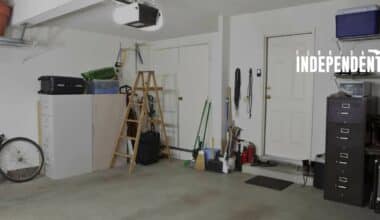We never want to think of our homes as unsanitary places, but the truth is, bacteria is everywhere. Over 340 different types of bacteria, to be exact, on various surfaces you touch most in your home.
Now, not all bacteria is harmful. Some types are actually vital to have in your system, as good bacteria protects your body from the bad bacteria.
That said, it’s important to know how to disinfect your home so you can better protect yourself and your loved ones from the bad.
To learn some of the best tips on how to sanitize your space, just keep reading!
Table Of Contents
Cleaning Safety
If you’re going to be using harsh chemicals during your cleaning, you need to practice safe cleaning techniques to prevent injury or illness.
First, you should always wear rubber gloves when handling chemicals. Keep two sets of gloves in your home: one for disinfecting and one for cleaning dishes. The same goes for rags – you should never clean your dishes with the same rag you use to disinfect the counters, for instance.
Also, be sure to wash your hands after cleaning, even if you use gloves. This includes after handling dirty laundry.
If you want to avoid bleach and other potentially harmful chemicals, you can make your own cleaners!
Here’s how to make disinfectant spray: mix together 3 parts water, 1 part white vinegar, then add a few drops of lavender and tea tree essential oils. Vinegar is an excellent cleaning agent, and lavender and tea tree oils are natural disinfectants.
How to Disinfect Common Surfaces
The surfaces most likely to carry harmful bacteria in your home are the ones you touch most often without even thinking about. Doorknobs, stove knobs, toothbrush holders, light switches, and faucet handles are among the germiest spots in your home.
Even though these are all hard surfaces, you shouldn’t ignore soft surfaces such as carpets and laundry when disinfecting.
Hard Surfaces
For hard surfaces, you can use your homemade cleaner or a bleach solution to disinfect. When working with bleach, you want to dilute it heavily and ensure proper ventilation to ensure safe use.
Spray hard surfaces with your chosen disinfectant and leave the solution to sit for at least 1 minute. Once the minute has passed, wipe away the cleaner with a sponge or cloth.
If you’re cleaning electronics, be sure that they’re off beforehand. Try to cover your electronics with wipeable glass or plastic, but if you can’t, be careful using chemical cleaners as they can damage your phone and other devices. An alcohol solution is a better choice than bleach or store-bought cleaners.
Soft Surfaces
When doing your laundry, use the warmest acceptable setting on your washing machine. If you’re washing towels or dishrags, always go with hot water. And don’t forget to clean and disinfect your laundry hamper as well.
For items you can’t launder, such as carpets and rugs, consider using a steamer to disinfect the area after vacuuming.
A surfacide UV-C disinfection system can also do the job without the hassle of scrubbing. Instead of soap and water, it uses UV-C energy to kill bacteria and viruses.
Keep Your Home Clean to Keep Yourself Healthy
By learning how to disinfect your home, you’re more likely to avoid contact with harmful bacteria and stay healthy.
Remember, when disinfecting, your safety is paramount. Use proper cleaning chemical protection, such as gloves and ventilation, and always dilute harsh cleaners like bleach before use.
For more tips on keeping your environment clean, take a look at our blog!


